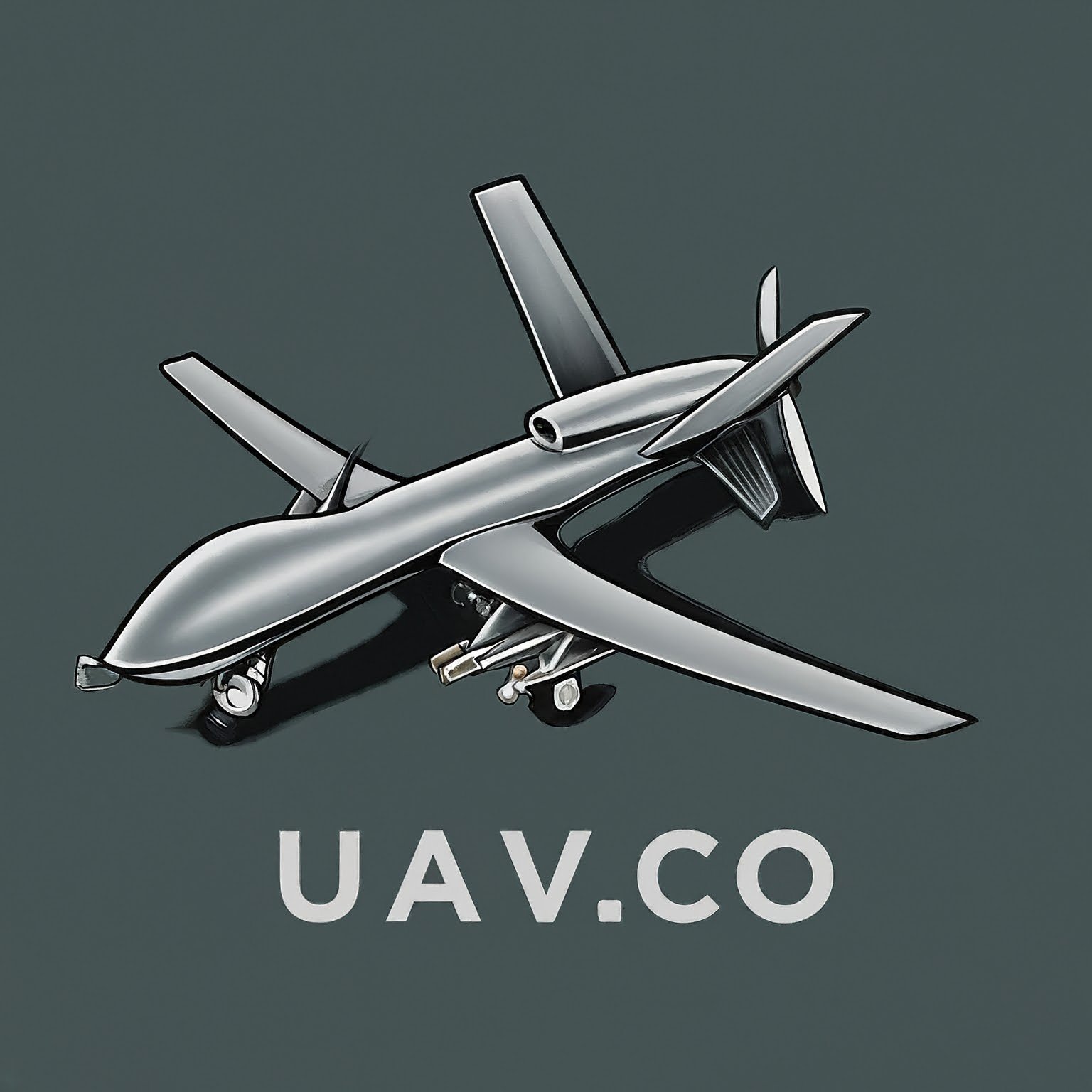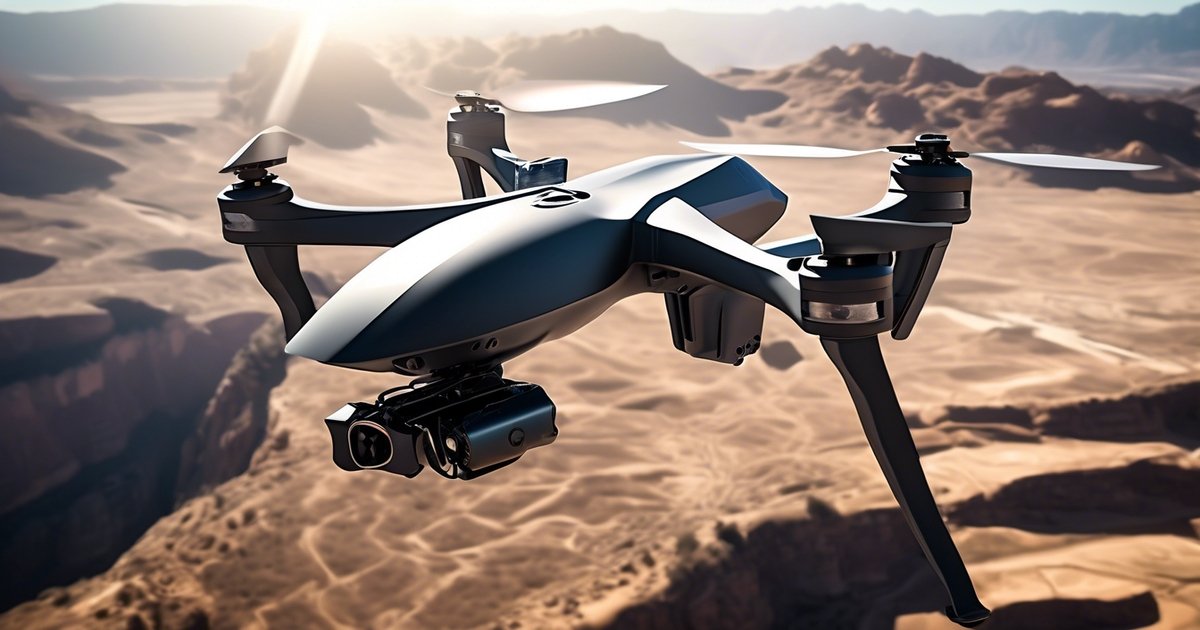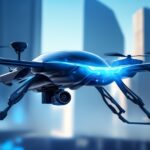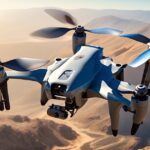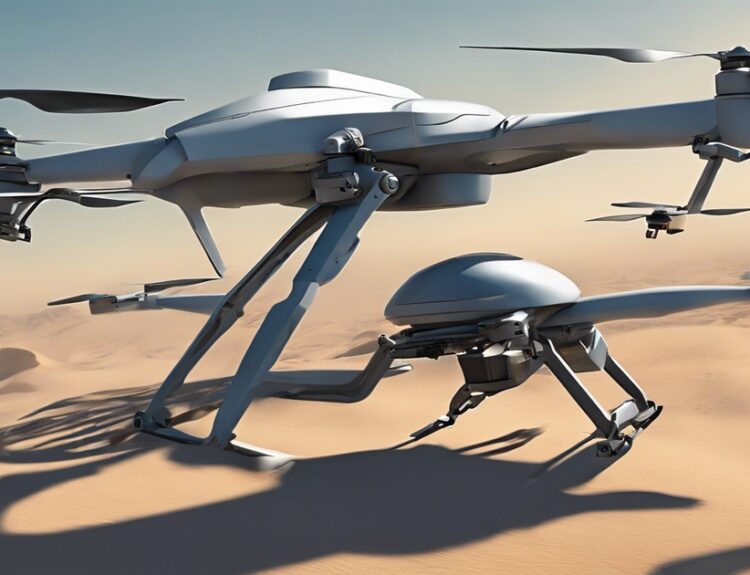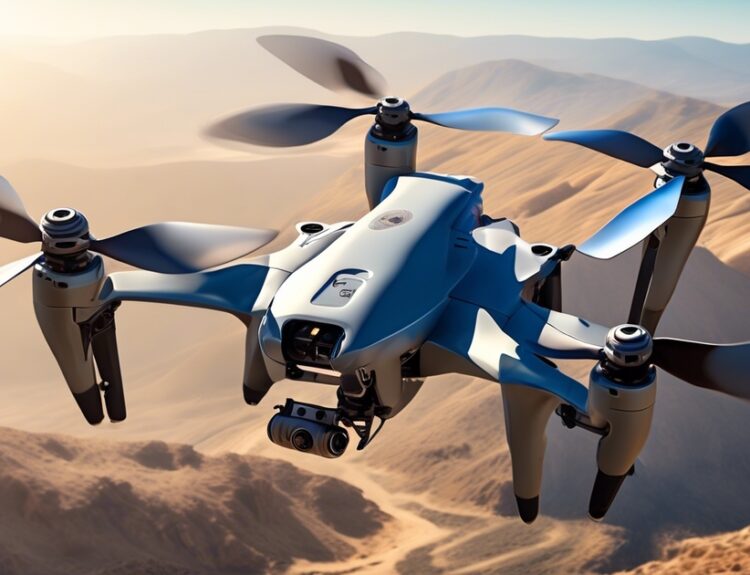Military drone technology has rapidly evolved, becoming a critical component in modern warfare and defense strategies. These unmanned aerial vehicles (UAVs) offer unprecedented capabilities for surveillance, reconnaissance, and targeted operations without risking human lives. As nations globally invest in research and development to enhance their military prowess, the sophistication of drone technology continues to grow. This post explores the cutting-edge advancements in military drones, their strategic implications on global security dynamics, and ethical considerations surrounding their use.
Key Takeaways
-
The evolution of military drone technology underscores the rapid pace of innovation in defense capabilities, highlighting the importance for military and defense professionals to stay abreast of technological advancements.
-
Understanding the diverse types and operational uses of military drones is crucial for leveraging their full potential in various military strategies and operations, from surveillance to targeted strikes.
-
Advancements in reconnaissance, surveillance, and target acquisition capabilities of drones significantly enhance situational awareness and decision-making accuracy on the battlefield.
-
The current capabilities and applications of military drones demonstrate their indispensable role in modern warfare, offering a blend of cost-effectiveness, operational flexibility, and strategic advantage.
-
Future trends in drone technology, including AI integration and autonomous operation, suggest a continuing shift towards more sophisticated and autonomous systems, necessitating ongoing ethical and strategic discussions.
-
The implications for modern warfare and defense strategies, coupled with public opinion and ethical considerations, underscore the complex interplay between technological advancement and societal values in shaping the future of military drone use.
Evolution of Military Drone Technology
Surveillance Upgrade
Military drone technology has seen a significant transformation. Initially, drones were primarily used for surveillance. Now, they are capable of autonomous combat functions. This shift enhances operational capabilities.
Drones have evolved from simple aerial vehicles to sophisticated unmanned aircraft systems (UAS). These systems can perform detailed reconnaissance missions without human intervention. The integration of AI and machine learning has been pivotal in this evolution. It allows drones to analyze data and make decisions faster than ever before.
Combat Capabilities
The advent of armed drones marked a new era in military operations. Drones like the Predator have been equipped with air missiles, enabling them to carry out precise drone strikes remotely. This capability has changed the nature of warfare, allowing for targeted attacks with minimal risk to personnel.
Armed drones deliver several advantages:
-
Precision in targeting
-
Reduced risk to soldiers
-
Ability to operate in hostile environments
However, there are concerns regarding their use:
-
Potential for collateral damage
-
Ethical implications of autonomous killing machines
Versatility and Efficiency
The transition from large manned aircraft to smaller UAVs represents a leap towards more versatile military assets. Smaller drones offer stealth benefits and can access areas that are challenging for traditional aircraft.
These unmanned aerial vehicles utilize advanced propulsion technologies like pusher propellers and laser engines, enhancing their efficiency on missions significantly. Moreover, the Dod UAS guidelines ensure these technologies adhere strictly to safety and ethical standards during operations.
In essence, military drone technology continues its rapid advancement towards smarter, more capable unmanned systems that redefine modern warfare’s landscape.
Types and Operational Use of Military Drones
Reconnaissance Drones
Reconnaissance drones are vital for intelligence gathering. They fly over hostile or inaccessible areas to collect data without risking human lives. These drones provide real-time video feeds and photographs to military decision-makers.
The use of reconnaissance drones has transformed battlefield awareness. Drone operators remotely pilot these aircraft from safe locations, significantly reducing the risk to personnel.
Combat Drones
Combat drones, also known as unmanned combat aerial vehicles (UCAVs), carry weapons for targeted strikes. They are deployed against high-value targets in environments too dangerous for manned aircraft. These drones can loiter over potential targets for hours, waiting for the optimal moment to strike with precision.
The deployment of combat drones minimizes collateral damage while maximizing operational effectiveness. Their ability to engage targets without direct human involvement is a game-changer in modern warfare.
Logistics Drones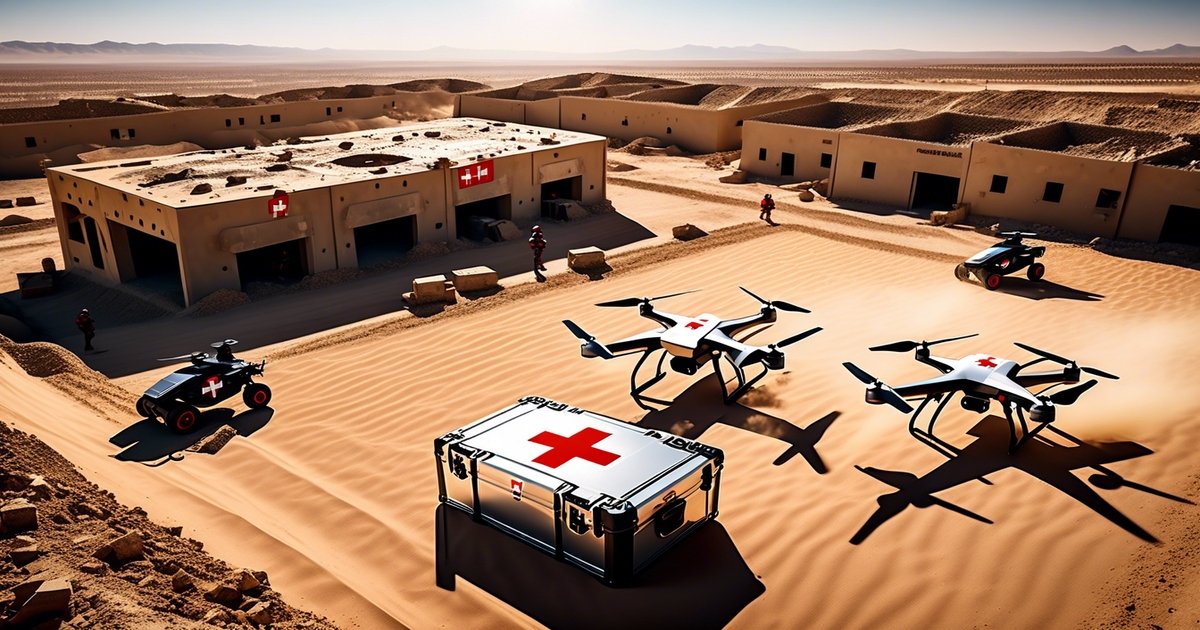
Logistics drones support military operations by transporting goods and supplies. They deliver essential items like food, ammunition, and medical supplies to troops in difficult-to-reach areas.
-
Pros: Reduced risk; increased efficiency
-
Cons: Limited carrying capacity; vulnerability to anti-aircraft systems
These unmanned vehicles ensure that soldiers receive what they need promptly, enhancing mission sustainability.
Swarm Tactics
Military drone technology enables coordinated swarm tactics. A group of small drones operates together under a single controller’s command, creating overwhelming challenges for enemy defenses.
-
Enhanced surveillance coverage
-
Distributed attack capability
-
Increased resilience through redundancy
Swarm tactics exploit the numerical advantage and distributed nature of drone technology, complicating countermeasures by adversaries.
Reconnaissance, Surveillance, and Target Acquisition Advancements
High-Resolution Imaging
Military drone technology now incorporates high-resolution imaging. This allows for detailed surveillance of targets from a safe distance. Drones equipped with these cameras can identify threats with precision.
The real-time data transmission feature enables ground forces to receive instant updates. Decision-making becomes quicker and more accurate. This technology is crucial during covert operations.
Night Vision Capabilities
Enhanced night vision and thermal imaging have revolutionized military operations. Drones can now operate in complete darkness, providing continuous surveillance.
These advancements allow the detection of enemy movements and hidden explosives at night or through obstacles like foliage. Law enforcement agencies also benefit from this technology for various operations.
Autonomous Systems
Autonomous systems in drones represent a significant leap forward. These systems allow drones to perform persistent surveillance without human intervention.
This means that drones can stay airborne for longer periods, covering vast areas without fatigue. They autonomously adjust their flight paths based on pre-programmed instructions or emerging intelligence about targets or threats.
Current Capabilities and Applications
Precision Strikes
Military drone technology has revolutionized warfare. Drones can now execute precision strikes with minimal collateral damage. This capability is critical in densely populated areas or near civilian infrastructures.
Countries have developed drones that pinpoint targets accurately. These vehicles carry small, precise munitions. The use of such technology reduces unintended casualties and property destruction.
Battlefield Monitoring
Real-time battlefield monitoring is another significant application. Drones provide commanders with continuous surveillance data. This information supports decision-making during combat operations.
The US and other countries utilize drones for this purpose extensively. They offer a bird’s-eye view, making strategic planning more informed and responsive.
Crowd Control
Drones also play roles in non-lethal operations like crowd control and psychological operations. Small drones can disperse crowds without direct confrontation or injury.
These vehicles may deploy loudspeakers, lights, or non-lethal projectiles to manage large groups safely and efficiently.
Cost-Effectiveness and Operational Flexibility
Risk Reduction
Military drone technology significantly reduces the risk to human pilots. Drones eliminate the need for manned aircraft in dangerous operations. This advancement saves lives.
Drones cost less than traditional aircraft. They do not require as extensive training for operators. Maintenance costs are lower too, thanks to technological advancements.
Rapid Deployment
Drones can be deployed quickly across various mission types. Their size allows for easy transport and deployment anywhere in the world.
The flexibility of military drones is unmatched. They adapt to different missions with minimal downtime between tasks.
Lower Costs
Technological advancements have reduced maintenance and operational costs of drones. Operators can manage multiple drones simultaneously, further saving time and resources.
Compared to manned aircraft, drones offer significant cost savings over time. They require fewer resources for operation and maintenance.
Future Trends in Drone Technology
AI Autonomy
Military drone technology is evolving. The future will see drones with increased autonomy. This is due to AI-driven piloting systems. These systems allow drones to make decisions without pilot input.
AI enhances operational efficiency and reduces the need for human pilots. Drones can perform complex maneuvers and respond to changing environments swiftly.
Stealth Operations
Stealth technology is another key trend. It makes drones undetectable during operations. This technology masks the drone’s presence from radar and other detection methods.
Stealth capabilities offer significant advantages in sensitive missions. They enable covert surveillance and strikes, minimizing detection risk.
Cyber Integration
The integration of drones with cyber warfare and electronic warfare systems is forthcoming. This allows for a multifaceted approach to modern combat scenarios. Drones become tools not only for physical but also digital battlefields.
They can disrupt enemy communications or gather intelligence on cyber threats, enhancing overall defense strategies.
Implications for Modern Warfare and Defense Strategies
Remote Tactics
Military drone technology shifts warfare towards remote operations. Drones allow forces to engage without risking soldiers’ lives. This automation in military tactics is a game-changer.
Drones carry out surveillance, strikes, and reconnaissance remotely. They provide vital information without direct human involvement. The use of drones reduces casualties among military personnel. It also enables precise strikes against enemy targets with minimal collateral damage.
Defensive Capabilities
The rise of drone swarms presents new challenges for defense systems. Military units must now counter multiple, coordinated UAV threats simultaneously.
Advanced missile and artillery systems are being developed to intercept these threats. These systems aim to neutralize drone swarms effectively before they can reach their targets. Naval forces also adapt by incorporating anti-drone technologies on ships.
Legal Frameworks
The advent of drone warfare necessitates new international laws and treaties. These legal frameworks must address the ethical implications of using drones in combat.
Current laws may not fully cover the use of unmanned vehicles in war zones. There’s a need for clear guidelines that protect civilians while allowing effective military operations.
-
Ensure accountability for wrongful strikes
-
Define acceptable uses of drones in conflict areas
Public Opinion and Ethical Considerations
Privacy Concerns
The rise of military drone technology brings about significant privacy concerns. People fear surveillance drones may violate their privacy. This is especially true for domestic use.
Drones can easily collect data without consent. They capture images and videos from above, often unnoticed. This raises questions about the boundaries between security and personal privacy.
Moral Debate
Another hot topic is the morality of using autonomous lethal drones in combat. The idea of machines deciding to take human lives sparks intense debate.
Critics argue that removing humans from decision-making processes dehumanizes war further. Supporters claim it reduces risk to soldiers’ lives. Both sides present compelling arguments.
Global Dynamics
Accessible drone technology impacts global arms race dynamics significantly.
-
Lower costs make drones available to more countries.
-
Non-state actors gain power through affordable military-grade technology.
This accessibility could lead to an increase in conflicts worldwide, as well as a shift in power balances.
Final Remarks
The exploration of military drone technology reveals its pivotal role in modern warfare and defense strategies, showcasing a rapid evolution from rudimentary surveillance tools to sophisticated systems capable of executing a wide range of operations. These advancements underscore the significance of drones in reconnaissance, surveillance, target acquisition, and their increasing importance in cost-effective and operationally flexible military applications. The discourse also highlights the critical public opinion and ethical considerations that accompany the deployment of such technologies, suggesting a complex interplay between technological innovation and societal values.
As the landscape of military drone technology continues to evolve, it invites stakeholders to engage in ongoing dialogue and research to navigate the future trends responsibly. They must balance innovation with ethical considerations, ensuring that advancements in drone technology contribute positively to global security and defense capabilities without compromising ethical standards. This call to action emphasizes the need for continued exploration, evaluation, and adaptation as part of responsible stewardship in the era of rapidly changing military technologies.
